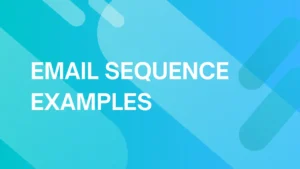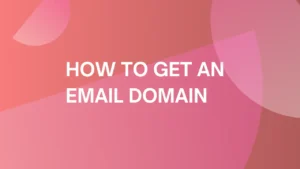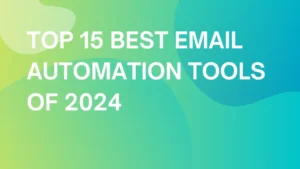
Interview with Tomáš Blaťák: “Cold outreach is not dead, it is just evolving”
I had the opportunity to interview Tomáš Blaťák, the product manager at Leadspicker, an innovative cold outreach tool.
He shares some valuable insights about how to run cold outreach in 2024:
- Cold outreach is not dead, it is just evolving
- Work on your targeting: Use trigger-base targeting instead of static databases
- Work on quality not quantity: The spray and pray approach is dying
- Use Warmup Inbox: Warmup email should account for 20% to 60% of your inbox activity
- If your reply rate is less than 8%, you should consider optimizing your copy or your target group
- Distribute your outreach across different domains, preferably split between Google and Outlook ESP
- Do not overlook the technical setup of your domain DMARC & SPF!
Can you briefly introduce Leadspicker?
Leadspicker is an all-in-one solution for cold outreach. It can help:
- Find relevant leads
- Automate email outreach with inbox rotation to guarantee email deliverability
- Automate email and LinkedIn outreach
- Trigger tracking
- Always on trigger-based campaigns
We also have a native integration with Warmup Inbox to help boost email deliverability.
How many users are you currently helping with lead gen?
Currently, we are running email outreach for more than 400 users.
Are most of your users working with a B2B audience?
Most of them operate in the B2B sector, but we still have a significant number of users from the HR industry, especially recruiters.
They often use emails found on GitHub, for instance.
From this perspective, this type of communication doesn’t strictly fall under B2B, but it also can’t be fully classified as B2C.
To be completely honest, I do not recommend using cold emails for B2C communication.
Ok, let’s get into the main topic: Is email outreach dead?
It’s not dead; I think it’s starting to work better than before, but there are a lot of new factors that we need to respect.
I highly recommend sending emails only based on some trigger and making them highly personalized.
Triggers can include job postings, posts on LinkedIn, news about a company, new office locations, etc.
With these scenarios, for example, in a whole week, you might reach out to a maximum of 20-30 companies (for typical trigger-based outreach).
From these efforts, you could potentially secure meetings with about half of them.
By using a trigger, do you mean shifting toward intent-based targeting? Using data providers like Apollo, for example?
I think Apollo’s time is slowly ending with the Google restrictions, etc. because outreach based on databases is slowly stopping working.
To be honest, they already stopped doing cold outreach based on prepared databases or lists, etc.
What we are doing now is trying to build some workflow for every one of our customers:
- Basically track some triggers on the internet to identify relevant companies.
- Then use the API endpoint to get the proper contact person for those company.
- Outreach only those few hundred contacts, time to time only a few dozens.
The main reason for the shift is Google’s new rules.
Google is now really strict when the outreach is marked as spam. You can easily get your inbox suspended.
So, you need to work on a smaller daily volume. We now recommend sending 25 to 40 daily emails per inbox, keeping an email warmup on, and tracking your deliverability stats.
That is a small volume, so you can no longer rely on the spay and pray approach. You need to be really targeted with our outreach.
One way to do so is to shift your mindset to trigger-based targeting.
An example of a trigger can be a job posting for a specific position. For us companies hiring SDRs are relevant, so we monitor those job posting and then reach out to the relevant person in a company.
Ok, speaking of scale. What are your latest recommendations about the volume of mail?
It will depend on your targeting and what warm-up you are doing. I definitely recommend using Warmup Inbox on all your inboxes.
You want the warmup emails to account for 20 to 60% of your inbox volume.
If you are doing outreach based on a cold database, the warmup volume should be 60% of your outreach. If you are using trigger-based targeting, you can go for 20%.
Also have a low volume in the first week of outreach.
Send around 20-25 leads per day per email. If, in the first two weeks, the reply rate does not exceed 8%, turn off the entire campaign.
Then, start optimizing your outreach messages and personalization, and also review your segmentation.
I see, so segmentation and targeting are key nowadays.
Exactly. It was always important but it became essential with Google’s new rules.
You mention that database targeting based on Apollo is dying. What about the intent data that Apolo provides?
Well, we have our own product: Pipebooster. It is a tool to track job changes, and we, of course, recommend using it for intent targeting.
Apollo is offering a similar service, so we were testing our tool against it.
From our test, Apollo was taking about six months to update its data. If you check Leadspiecker on Apollo, you will find employees who left five years ago.
Data recency is often an issue with this type of data provider, so I don’t trust their intent data. The data quality of Apollo emails is also quite low. If you don’t check emails, you can get a 40% hard bounce.
This is another important point to maintain your email deliverability. Always check your email list.
EmailListVerify can actually help with that, or you can check emails directly before outreach with Leadspicker.
On the other hand, Apollo has good information about technology tracking and at least they have a lot of information in place. But I highly recommend working with that, then exporting everything and pushing that into a sequence.
We usually do extra filtration on top of the Apollo database: We use GPT prompts and GPT check each company based on a website description and LinkedIn descriptions.
Typically, out of 1,000 companies, only 200 will be relevant. But by the end of the day, the users will have better results because they stop burning their email reputation.
You recommend targeting based on triggers. Now, how do you scale this trigger-based outreach?
Basically, by adding more triggers and also extending geolocation, where you track your triggers.
For example, a first trigger can be the job posts, but after that we can we can also track mentions of some relevant keywords on a post, etc. and we can track that in one geolocation or in multiple geolocations.
That allows you to scale while keeping the quality and conversion rate high.
It’s also important to mention that from time to time 10 leads that come from some trigger are better than 100 exported from some database.
Ok. And how do you handle load balancing for trigger-based outreach? If you have a spike of 200 new job postings, how do you know which ones are relevant? How do you handle it?
That is a nice problem to have.
We still have multiple inboxes prepared, so we can easily distribute the workload by inbox rotation. If there is a higher spike, it will be a positive issue.
That is a good issue to have indeed. You are in a bit in specific situation as you have a lot of warmum inboxes in reserve. For someone new to the outreach game, would you recommend to set up multiple inboxes?
So yes, currently, each of our sales reps has multiple inboxes with warmup always turned on and ready to use.
I highly recommend having multiple inboxes per sales rep; they can be on the same domain with simple name/surname permutations, but at least two domains.
Using multiple inboxes is a way to scale outreach with a really small sending limit, for example, 25 emails per day per inbox.
If possible, would you recommend splitting those inboxes across different domains?
Yes, it lowers the risk of potential bans. I would even recommend using a different ESP.
Use two domains: one on Google and the second on Outlook.
And rotate emails based on MX records. I also saw an increase in custom ESPs on the market.
Would you recommend using those custom ESPs?
It is quite a new trend. I have started to see some ESP providers building domains from the ground up for cold outreach.
They are able to scale to a high number of emails from day one. We are still tracking these solutions, and time will show us how good they are.
But from my point of view, for now is better to have multiple Gmail & Outlook domains and warm them up with Warmup Inbox.
Because custom ESPs can be easily banned by big players like Google, Microsoft, Zoho, etc.
Do you think there will be a move away from cold email toward other channels like LinkedIn outreach?
LinkedIn is under even more regulations than emails.
There are limits for the number of connection requests and also for Inmails, Linkedin is a great channel to build social proof and get inbounds. Overall, social proof can help you with other acquisitions.
For example, you can target only people that liked or commented on your posts.
When they receive an email from you, they already know you, so they are more likely to reply to you.
I think at this moment, email is still the winning channel. It just needs to be done smartly through:
- Proper targeting
- Proper messaging
- Proper domain warmup
- Proper DNS and technical setup
But also, cold calling is slowly coming back and a lot of companies are starting to integrate it into cold calling AI, so we will see, which of those channels will be the best.
Also maybe there is no reason to choose only one “best” channel, and maybe combining them all together can bring you much better results.
At this point, on the Leadspicker platform, we are combining email and LinkedIn together.
I see. Last question: Any recommendations for somebody targeting a B2C audience?
DO NOT TARGET B2C AUDIENCE!
Cold mailing is only for the B2B segment. It does not make sense to target the B2C segment. In B2C, you have many other options for acquiring customers.
What about industries that need to deal with B2C like HR?
For recruiters, I would recommend using LinkedIn instead of email.



